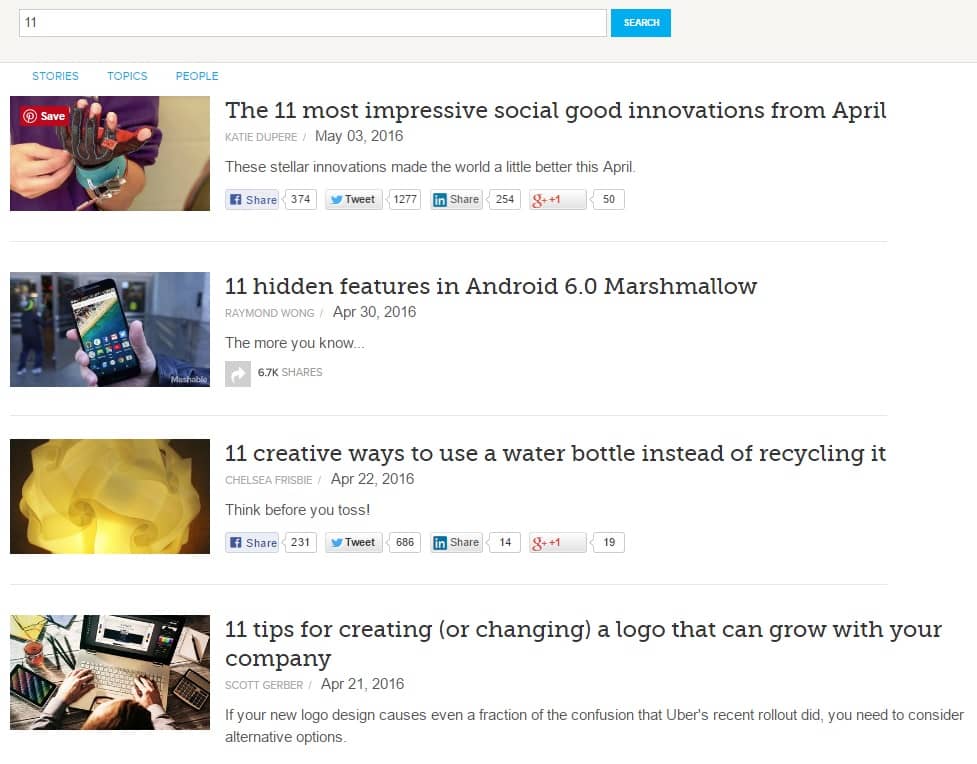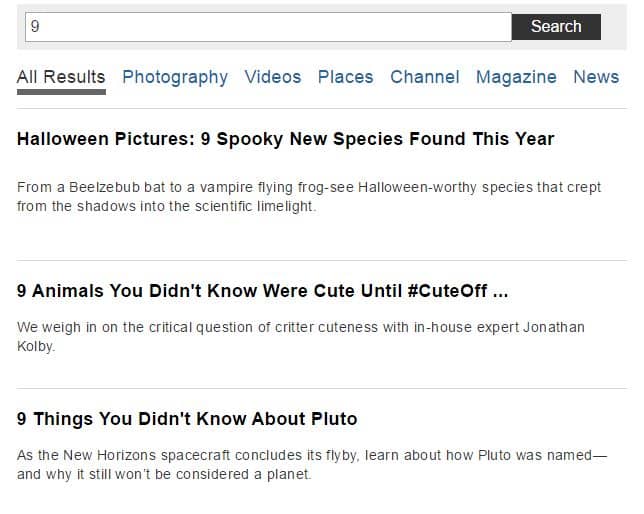
Even if you haven’t heard of the term “listicle”, you’ve definitely read one. While the format isn’t exactly new, it’s been at the forefront of content marketing over the last few years, with blogs and websites producing them on every topic imaginable.
So what is a listicle? They’re defined by Oxford Dictionaries (yes, really) as “a piece of writing or other content presented wholly or partly in the form of a list”. Or in the format you might be more likely to recognise them, “21 things illustrated with bullet points and fun pictures”! See below for just a few examples of Buzzfeed listicles using that exact number.As you can see, the listicle format is often used by the site for fun topics, largely aimed at procrastinating students and bored office workers. This form of clickbait has worked wonders for the company (who now have over 200 million monthly uniques), and has been imitated by sites all over the web.
But listicles aren’t all completely dedicated to mindless fun. More intellectual topics like science and tech can also be suited to the format, as complicated information can be broken down and presented in a more appealing way to the reader. See examples from Mashable below, who have established themselves as one of the biggest names in technology media with 45 million monthly uniques.Imagine how much less appealing might these topics look to many readers if they were presented in long form? This proves another benefit of listicles – they can help to attract a new or different readership to a brand, by making their content more accessible to everyone.
Similarly, National Geographic’s site targets a younger, social media savvy audience by posting fun listicles on animals and nature. This allows them to tap into another market, compared with the older (and less click-happy) readership of their more highbrow magazine.
These few examples show that brands are evolving their content marketing methods in a bid to attract as many readers as they can. No matter how serious or inane the topic, the allure of the listicle will reel readers in with their psychological powers.
Now we’ve introduced you to the role of listicles in content marketing, let’s take a look at some more reasons why they are so popular with both readers and web writers – in our very own mini listicle!
7 Reasons Why Listicles Are So Popular
1. Listicles are easy to create
For the online writer today, a typical day is spent juggling meetings, reports, spreadsheets… and that’s before any of the writing even begins. Listicles provide an easy template to help get the volume of content needed up on a site, quickly and efficiently (check out the ListiClock to see just how frequently Buzzfeed post theirs).
While some writers may argue listicles mark a downfall in quality of writing, most website owners would say that visitors and engagement are actually more important to them than journalistic integrity. So clickable headlines and easier to follow articles are a no-brainer – leading us to the fact that…
2. Listicles bring traffic to your site

Image Credit: Nabeel Syed
Listicles are like magnets for clicks. The human brain loves lists, as they organise information in advance, putting them into pre-existing categories for an easy read. Numbers in their headlines also grab our attention, quantifying the length of the read for us before we begin. These are just some of the things that make us more likely to click on “17 awesome ways to decorate your workspace”, than “how to make your desk look better”.
Because of their addictive nature, listicles have also proven to have a low bounce rate. Think about it – if your site’s sidebar suggests even more to read, it’s likely that your procrastinating reader will move onto another one afterwards. So not only do listicles bring users to your site, they keep them on it, too.
3. Listicles are ideal for SEO

Image Credit: Luis Llerena
The simple, predetermined structure of a listicle makes it easy for the writer to utilise their on-page SEO skills. Keywords can easily be used in the title, headings and subheadings – and that’s before you even get to the title tags and meta description. Using an image for every point on the list provides another opportunity for keywords to be used, in their description, caption and alt text.
Referencing other websites and blogs in your listicle is an easy way to help your SERP rankings. Plus, you might even get a link back to the page – the holy grail of SEO.
4. Readers have adapted to read listicles

Image Credit: Tatiana Nino
With an infinite amount of content online, people’s attention spans have shrunk as they’re constantly bombarded with the next thing. A recent study even showed that the average human attention span has fallen to just eight seconds – that’s less than a goldfish!
Listicles are also easier to read on mobile and tablets, from which an ever-increasing amount of traffic is coming from. In fact, over 70% of Buzzfeed’s traffic now comes from a mobile device. So by targeting those on the go, you’ll be tapping into a market hungry for new content at their fingertips.
5. People love to share listicles

Image Credit: Freestocks.org
Logging onto any social media platform, you’re likely to come across a listicle posted by one of your friends right away. Listicles are inherently shareable, Max Woolf explains, starting with their “non-neutral headlines that deliberately invoke a reaction in the reader” – aka, because they’re essentially linkbait.
Another reason listicles are so shareable is because they tap into our emotions – particularly the informal, personable breed of them that Buzzfeed do so well, such like this, this and this – prompting user to share this emotion with their friends. You can just see the Facebook shares asserting “OMG – this is SO ME!!” Which moves us onto…
6. Listicles show that your brand is relevant

Image Credit: Gratisography
It’s 2016 – blink, and suddenly everyone is using the next new viral technology or social media platform. Just like an iPhone 4 user, if you don’t plug into the newest thing, you’ll be phased out.
While it would be impossible to implement every new craze into your marketing mix, publishing listicles is an easy way to let users know you are with the times. It looks as if listicles are here to stay for now, so it’s important that your brand feeds the demand – or it risks getting left behind.
And the most obvious one of all…
7. Listicles are fun!

Image Credit: Andrea Enríquez Cousiño
Come on, there’s no denying that a listicle is simply more fun to read than a long article. Goldfish brain or not…
So there you go – our Top 7 Reasons Why Listicles Are Really Really Great (okay, fine – we’ll stop now). To round up this post, here are our dos and don’ts for when you’re writing your next listicle.
Listicle Dos and Don’ts
Do:
- Come up with an attention-grabbing headline for your listicle.
- Choose an odd number of points for your list – they’ve been proven to perform better than even numbers.
- Make that number as high as you can.
- Accompany every point with an image, or if you want to make it even more fun, a GIF.
- Make use of your on-page SEO skills.
Don’t:
- Only create listicles for your site – you should provide a balanced mix of content types to cover all bases, including long form articles, infographics, and multimedia.
- Be sloppy with the layout. Listicles are popular for their simplicity, so make sure the layout is consistent.
- Add bad quality images. They are the thing that stands out the most in a listicle.
- Overlook the tone of voice. Humour and personality should shine through.
- Forget to share on social media!
We hope you enjoyed learning more about the immense power behind listicles, and that we proved how they can be a valuable part of your content marketing mix. To learn more about Digivate’s content marketing services, contact our team today.







